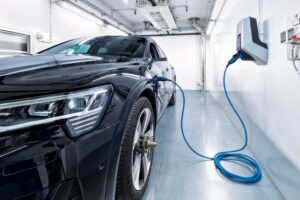For the majority of today’s customers, the attractiveness of the combustion engine is unrivalled. However, the buyer’s view and hence the powertrain mix is confronted with the EU’s climate targets. As a result the chances of internal combustion engines (ICEV) within a carbon-neutral mobility appear to be correspondingly low. Nevertheless, there are circumstances under which the success story of the internal combustion engine can be continued in 2030. Find out under which conditions this is possible in the 2nd article of our Powertrain Scenarios 2030+:
The traditional ICEV has been able to prevail over alternative powertrains. This was caused by an intensification of the EU emissions regulation of manufacturer’ fleets, which has taken place in the early 2020s. The change in regulation required vehicle manufacturers to report cradle-to-grave emissions for all registered passenger cars. This shift from tank-to-wheel emissions has eliminated the one-sided penalization of the internal combustion engine, which has led to a strong convergence of the CO2 equivalents of the powertrain types.
By introducing synthetic fuels, the mandatory fleet emission limits of the future EU regulation could also be met by ICEVs.
The fundamental basis for this is the extensive usage of synthetic fuels (eFuels) in the transport sector, such as aviation and shipping. Due to its widespread use in these sectors, production costs were subject to a strong cost degression, which in combination with imports from regions with surplus in renewable energy led to declining prices. While hybridization and efficiency technologies caused the purchase prices of ICEVs to rise slightly, the resulting fuel savings almost offset the rise in fuel costs. In addition, the vast majority of customers continue to prefer cars with internal combustion engines because of longer ranges and the fast familiar refueling at the expanded network of refueling stations. Additionally, a high amount of private buyers perceives the lower initial cost of ICEVs as an influential factor.
People tend to prefer their own cars for several reasons and shared mobility did not gain significant market share. Thus the internal combustion engine will remain the dominant powertrain among the new vehicle sales in 2030.
Although technological progress has been made in renewable generation and storage technology, the sharp rise in demand for electricity from other sectors is leading to a significant increase in electricity prices in Europe. As a result, the operating cost advantage of battery electric vehicles (BEVs) compared to vehicles with combustion engines shrank considerably despite the cost of eFuels, especially when importing them. Furthermore, rising raw material prices led to continued high purchase prices for BEVs.
… the operating cost advantage of battery electric vehicles (BEVs) compared to vehicles with combustion engines shrank considerably …
OEMs equip BEVs with low battery capacities in order to reduce the high prices of battery electric powertrains, which limits range and charge speed considerably. Besides suffering from high material cost, the European economy growth as well as innovation is stagnating. At the same time, high wages are leading to increasing production abroad. This benefits low-wage countries in particular, which are investing in the infrastructure, the education system and the administrative structure through the additional income (partly even from eFuel exports) and are therefore becoming more attractive as production locations in general. One effect of the reduced economic performance in Europe is reduced investment in infrastructure. Beside the high costs, the stalled expansion of the charging infrastructure, leads buyers to not consider battery electric powertrains as attractive.
The expected demand for fuel cell powertrains did not occur. As a result, it was not possible to generate cost degression due to the lack of economies of scale. This is also caused by limited expansion of H2 filling stations, which failed by far to reach the coverage of fuel stations in 2030. Due to the lack of customer acceptance of fuel cell vehicles (FCEVs) and BEVs, most OEMs stopped investing in the research and development of alternative powertrains during the decade, as the EU’s climate targets became also achievable with ICEVs. The technical dimension is accompanied by an unfavorable economic development.
But can the tide still turn and alternative powertrains gain market share? Will affordable synthetic fuels involuntarily lead to the dominant internal combustion engine? What chances would alternative powertrains have under these circumstances? You are welcome to discuss these topics with us!
In the next episode of the Powertrain Scenarios 2030+, you will find out what impact highly automated driving can have on our choice of powertrain and our mobility requirements.
So how do you rate this matter?
A mobility Scenario by
R.Troeger@consulting4drive.com


